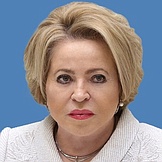Regional flags and emblems


PROFILE
Established 27 May 1703
The city of St Petersburg is part of the Northwestern Federal District
Area 1,400 sq km
Population 5 645 900 (2025)
Ethnic groups
(2020 National Census, %)
Russian – 90,63
Other – 9,37
Administrative divisions (2024):
Inner-city areas — 111
Geography and climate
St Petersburg is located in the western part of Prinevskaya lowland, where the River Neva flows into the Gulf of Finland, and on the islands of the Neva Estuary.
Inland waters occupy about 10% of the city's territory. Overall, there are 69 rivers and other waterways in St Petersburg and surrounding areas administratively subordinate to the city, including 40 rivers, branches, channels and canals with a total length of more than 200 km within the city boundaries. The largest of them are the Bolshaya and Malaya Neva, Bolshaya, Srednyaya and Malaya Nevka, Fontanka, Karpovka, Okhta, Zhdanovka, Moika, Black River and Obvodny Canal. There are more than 580 bridges, including 20 drawbridges, of which seven are across the Neva. The length of the sea coastline within the modern urban area is about 35 km. The length of reinforced and granite embankments is 143 km.
St Petersburg’s climate is temperate continental. January temperatures average −3.9°C, July temperatures average +19.4°C. Mean precipitation in January is 44 mm, mean precipitation in July is 79 mm. The prevailing winds are west, south-west and south. The White Nights period lasts from May 25−26 to July 16−17, with almost 19 hours of daylight at the end of June.
Government
The legislative branch is represented by the Legislative Assembly of St Petersburg, which is the permanent, representative and only body of legislative authority in the city.
The Legislative Assembly of St Petersburg has 50 deputies elected for five years, with 25 of them running in single-mandate constituencies and the other 25 in the single electoral district, where winners are identified in proportion to the number of votes cast for lists of deputies nominated by electoral associations.
The current Legislative Assembly of St Petersburg was elected in September 2021. Its term expires in September 2026.
The executive branch comprises the Government of St Petersburg – supreme and permanent executive body of state power in St Petersburg, headed by the Governor of St Petersburg – and other executive bodies subordinate to the Government of St Petersburg. Together they constitute the administration of St Petersburg, the system of executive bodies of state power in St Petersburg.
The Governor of St Petersburg is the region’s highest-ranking official elected for a term of five years by Russian citizens who permanently reside in St Petersburg. The term of office of the current incumbent expires in September 2029.
Economy and natural resources
The industrial sector accounts almost 20% of the regional GDP, about 30% of the tax revenue and more than 60% of the total profit.
St Petersburg has a cluster of high-tech facilities that produce sophisticated equipment. Local plants operate in many industries, including power engineering and metals (more than 50 large companies), instrument making (about 60 companies), and electrical engineering (for over 130 companies). The food industry is represented by more than 70 enterprises. The local shipbuilding sector includes 30 facilities producing tankers, passenger catamarans, bulk carriers, dry cargo ships, warships, etc.
The largest industrial companies in the city are Baltiysky Zavod Shipbuilding Company, Severnaya Verf, Admiralteiskie Verfi, Proletarsky Zavod, Svetlana, Power Machines, Izhorskiye Zavody, group of companies Kirovsky Zavod , ZVEZDA, St Petersburg Red October, Arsenal Plant, ODK-Klimov, and LOMO.
Upward trends are observed in the local companies’ turnover, with trade and industry companies in the lead.
The local consumer market also shows an upward trend: both retail and wholesale trade, as well as catering show an increase in turnover. The foreign trade of St Petersburg is also growing.
The resource potential of St Petersburg mainly relies on the local surface freshwater and groundwater. Chloride-sodium mineral waters are produced in the Sestroretsk area, while curative and table ferrous mineral waters come from the Polustrovo deposit in the northern part of the city. There are sand and gravel deposits, pebbles, sand, clay, sandstone, loam, and peat. In the southern part of St Petersburg, there is a thermal anomaly, where the temperature of crystalline rocks reaches +70°C at a depth of 1,900−2,200 m.
Natural resources of St Petersburg include 308 water bodies, about 200 km of waterways, 24 large islands, 38,000 ha of greenery, including 13,000 ha for public use (73 parks, about 1,000 gardens, and more than 900 greened streets).
Culture and tourism
St Petersburg is a major international and Russian cultural center known for its magnificent architecture, palaces, and museums. This city is one of the most attractive tourist centers of the world. In addition to its rich collections of works of the past represented in St Petersburg museums, the city has about 50 art galleries and exhibition halls of contemporary art. Its cultural heritage invariably attracts large numbers of tourists.
The glory of St Petersburg is in its unique architecture, monuments, museums and theatres such as the State Hermitage, the State Russian Museum, the Mariinsky Theatre, the Philharmonic, the State University, and the palace and park ensembles of Peterhof, Pushkin and Pavlovsk.
UNESCO has included the Historic Centre of St Petersburg Related Groups of Monuments to its World Heritage List, including the main urban area of Nevsky Prospekt, its Liteinaya and Admiralteiskaya parts, the Vasilyevsky Island, the Petrograd Side, the Neva River with its embankments, the palace and park ensembles in the city's suburbs – Pushkin, Pavlovsk, Gatchina, Petrodvorets, Strelna and Lomonosov – the historical part of Kronstadt, the Oreshek Fortress, the Pulkovo Observatory ensemble and many other landmarks.
St Petersburg is a city of museums. Today the city can offer its guests about 200 museums, including the world-famous Hermitage, one of the largest museums in the world, whose collection includes about 3 million exhibits, and the Russian Museum, which reflects almost 1000 years of Russian art history (from the 11th century to the present day). The museum owns one of the best collections of icons, paintings and a collection of Russian sculpture, unique in its completeness.
The city has a large number of theatres, including world-famous ones, such as the Mariinsky Theatre, the Mikhailovsky Theatre, the Alexandrinsky Theatre, the Tovstonogov Bolshoi Drama Theatre and many others. Every year, the city hosts a series of international art festivals, music and theatre festivals, contests, hundreds of exhibitions and premieres. Lovers of chamber music can enjoy the best examples of classical music in the historical entourage of St Petersburg palaces.


